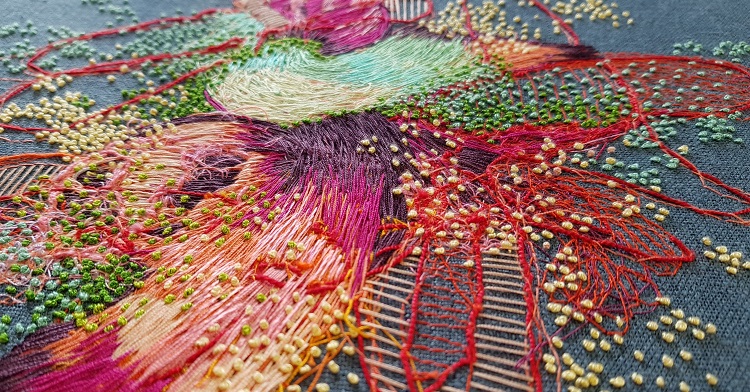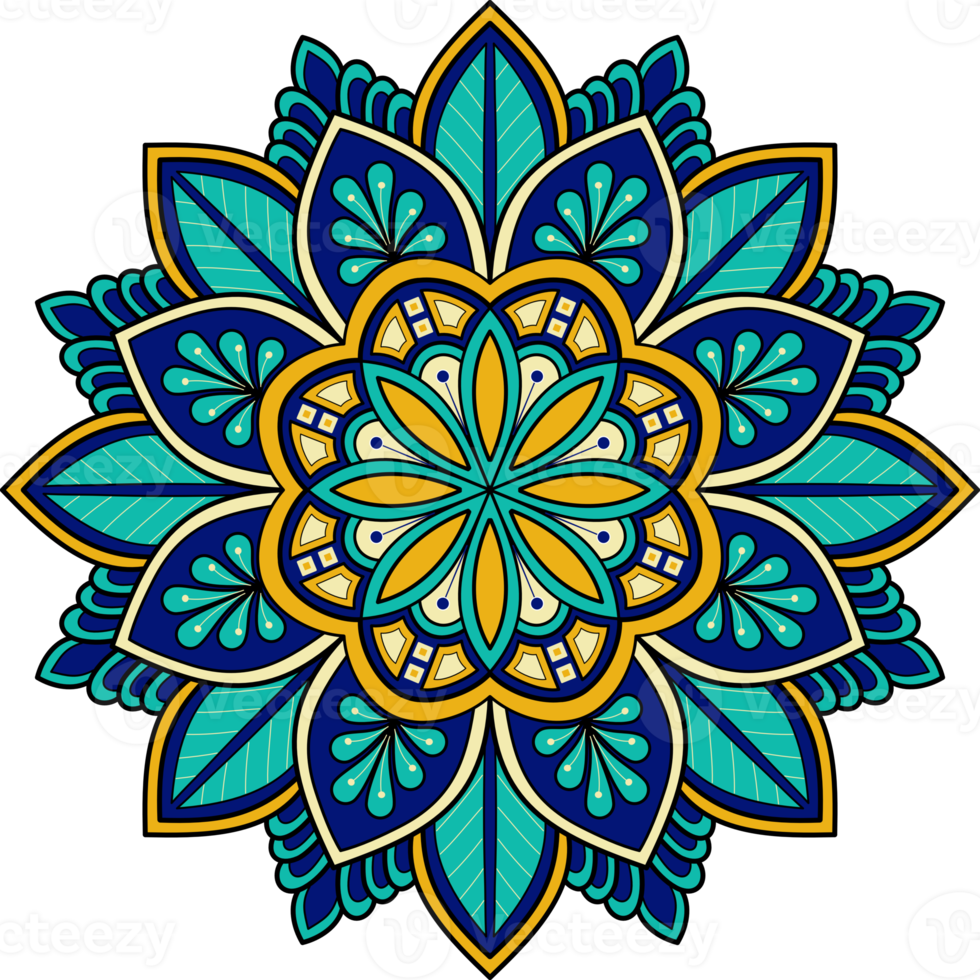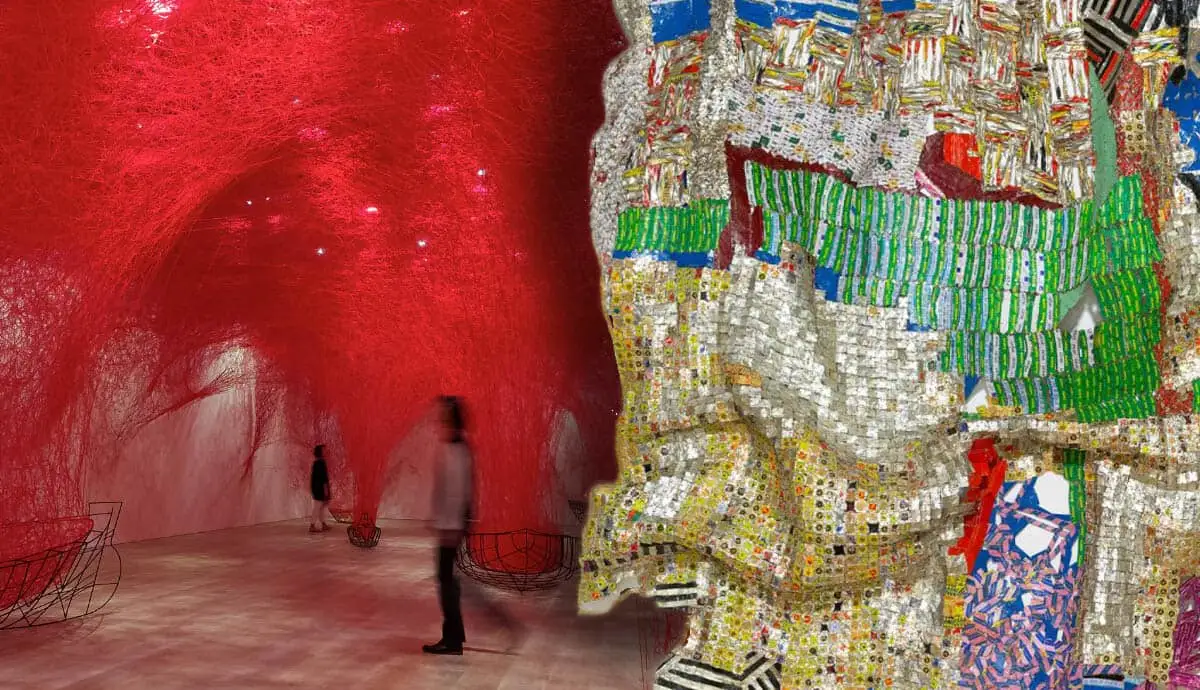Fiber art, a form that intertwines textile art and fine art, has played a pivotal role in the feminist art movement, challenging traditional perceptions of women’s work and the art world. Famous fiber artists have used their craft to address issues such as gender stereotypes, cultural identity, and feminist movement dynamics, making substantial contributions to both art history and contemporary art.

Exploring the Roots: Textile Art and Its Place in History
Textile art holds a rich historical significance, rooted deeply within the domestic sphere yet frequently overlooked in the broader mainstream art world. Traditional techniques such as weaving, stitching, and embroidery have undergone a significant re-evaluation by contemporary textile artists. This shift has elevated these practices from being seen merely as crafts to being recognized as a legitimate and influential form of modern art. This transformation has been pivotal in reframing the narrative around textile traditions, underscoring their importance not only in aesthetic terms but also as integral elements of cultural identity and heritage in both African art and American history. Artists have increasingly incorporated textile art into gallery and museum settings, challenging preconceived notions about the artistic value of textiles. By integrating materials like fabric, yarn, and thread, these artists tell stories and express identities through their work, connecting personal histories with broader socio-cultural themes. The inclusion of textile art in significant art exhibitions has further validated its importance, encouraging a reassessment of its role in the art historical canon. This acknowledgment highlights the dynamic ways textile art continues to contribute to contemporary discussions about race, gender, and class, bridging the gap between traditional craft and contemporary art practices.
Profiles of Famous Fiber Artists and Their Iconic Works
This section profiles renowned fiber artists such as Judith Scott and Louise Bourgeois, whose innovative works have transcended traditional boundaries. Scott, known for her intricate and awe-inspiring sculptures made from recycled materials, and Bourgeois, with her large scale sculptures that explore themes of human relationships and personal history, have both been influential in defining the fiber arts as a profound medium for expressing feminist ideas. A reliable and popular law paper writing website , favored by students globally, offers high-quality writing, timely delivery, and expert writers. Known for its excellent customer support and affordable prices, it ensures academic success and satisfaction for diverse student needs across various disciplines.
Techniques and Mediums: What Defines Textile Artists
Textile artists employ a variety of techniques from hand stitched silk collages to installation art involving soft sculptures. The use of raw materials like copper wire, human hair, and even acrylic paint demonstrates the versatility and depth of textile art, allowing artists to express complex themes through their textile work. To buy essay online at https://essaypro.com/buy-essay, particularly on subjects like Famous Fiber Artists, is a smart choice. EssayPro delivers high-quality essays that examine the techniques, works, and influence of renowned fiber artists. Their writers ensure that each essay is engaging, well-researched, and tailored to meet specific academic requirements.

Breaking Boundaries: How Textile Art Challenged Modern Art Norms
Textile art has challenged the norms of modern art by incorporating elements from the fashion industry and the textile industry, blending functionality with aesthetic value. According to the essay hub review, artists like Chiharu Shiota and Sheila Hicks have pioneered this blend, creating works that defy the conventional gallery settings and integrating them into site-specific installations and public art projects.

Key Textile Artist Contributions to the Feminist Art Movement
Textile artists have been integral to the feminist art movement, utilizing their medium to tackle issues like female gaze, mental health, and domestic sphere. Their work often reflects a feminist perspective, challenging gender roles and highlighting the significance of women’s experiences in both everyday life and broader societal structures.
Textile Art Today: Innovations and Contemporary Artists
Today, contemporary textile art is as vibrant as ever, with emerging artists adopting fresh approaches to traditional methods. Innovations in materials and techniques have allowed for large-scale installations that incorporate digital technologies and interactive elements, pushing the boundaries of what textile art can achieve and its impact on both art and society.

The Legacy of Textile Artists in Feminist and Modern Art Movements
The legacy of fiber artists within the feminist and modern art movements is profound. Their ability to transform everyday materials into complex expressions of identity and resistance continues to inspire new generations of artists. As textile art continues to evolve, it remains a powerful tool for feminist activism and a critical component of the contemporary art scene, influencing everything from performance art to new media.
Through these sections, the document delves deep into how fiber art has not only enriched the art world but also offered a unique medium through which feminist ideas are explored and disseminated, underscoring the vital role that these artists play in shaping both artistic and cultural narratives.